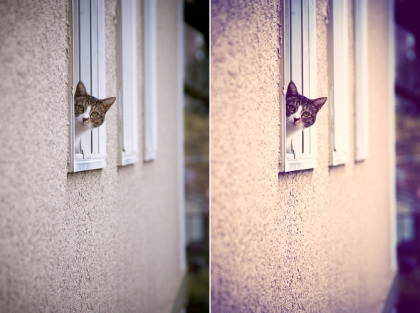Creating HDR Images for Newbies
October 2, 2010
Firstly, in case you’re unaware, HDR is short for High Dynamic Range. This is a common technique used by photographers to manipulate a scene to create proper exposure when otherwise impossible through post-processing.
A perfect example for this is capturing a landscape with a clear and bright sky. What will happen is the sky will be over-exposed, or the landscape will be under-exposed. This is where HDR comes in. The idea is simple, however the process can be quite time consuming. What has to happen is instead of taking one capture, you would need to ideally take at least 3. One for the highs, one for the lows, and one with proper exposure. The most common method is to simply set your camera to bracketing mode with a 2EV difference in exposures. In most scenarios this will enable you to capture all ranges of detail.
I’ll explain how this is done in Photoshop, since its the most commonly used application. Once you’ve got your captures:
- Open them with the RAW editor, SELECT ALL, and click OPEN IMAGE(S)
- Next, FILE > AUTOMATE > MERGE TO HDR
- Click on ADD OPEN FILES and hit OK
- Now you should see a preview of your HDR image.
- You will want to change the BIT DEPTH to 16-Bit, and also adjust your white point if you need to on the histogram
- Click OK to convert
- In the new window, if you want to adjust the TONING CURVE AND HISTOGRAM, change the method to LOCAL ADAPTATION
- Adjust the THRESHOLD to how you see fit and then hit OK
- You’ve now successfully created an HDR image! From here you can go ahead and do other modifications to the image if you feel the need.

This was the perfect situation for using HDR, since photographing a dark subject will normally cause everything else to become over-exposed.
Adobe Photoshop steps in again to help you get that cross-processed look on your images and photographs. Simply put, what you want to achieve, is what traditional dark-room techniques achieve when slide film chemicals are used to process print film, and vice versa. Check out this wiki link to learn more on that.
What I found works best I actually came upon on a Flickr tutorial. A quick google search for “getting that cross-processed effect” lead me through several links and eventually Flickr was where I hit the jack pot. It was titled “Vintage Film effect,” but I’ve heard some people refer to cross-processed images that way because it does look somewhat like old film. I will sum up what I think about the steps found in the tutorial, but click here to download the PDF that I found on Flickr. Also, be sure to check out the Photoshop Action so kindly included for us on the Flickr tutorial page.
First off, this tutorial is brilliant. By using adjustment layers in the tutorial, the instruction is simultaneously transforming your photograph while teaching you the power of adjustment layers. Now the experienced Photoshoper has known that adjustment layers are terrific for a long time, it’s a banal detail, but to all who don’t be certain to take in and really sop up the info the tutorial has to offer.
Next the tutorial spirals you through the intimidating world that is the Curves interface. Within this panel you can stretch and compress tones at will, selectively by colour channel, or with all colour channels selected, as well as do many, many other things. I could go on about what those other things are, but instead I’ll recommend that you visit this link on Curves to learn more on that. At any rate, I like the integration of this Curves step because it gives less experienced Photoshopers a chance to learn something new.
The rest of the tutorial involves setting a low opacity layer of solid magenta over your other layers, and flattening the image; a simple step, and just as such, it is simply effective. Playing with the opacity of the final Magenta color cast layer may be something to look at. I’ve set the procedure up into three actions: labeled Hi, Med, Lo, which finish with 22%, 17%, and 9% opacity, respectively, on the Magenta color cast layer. It works. you’ll flatten your image and you’ll love it.
I encourage you to post your results!


